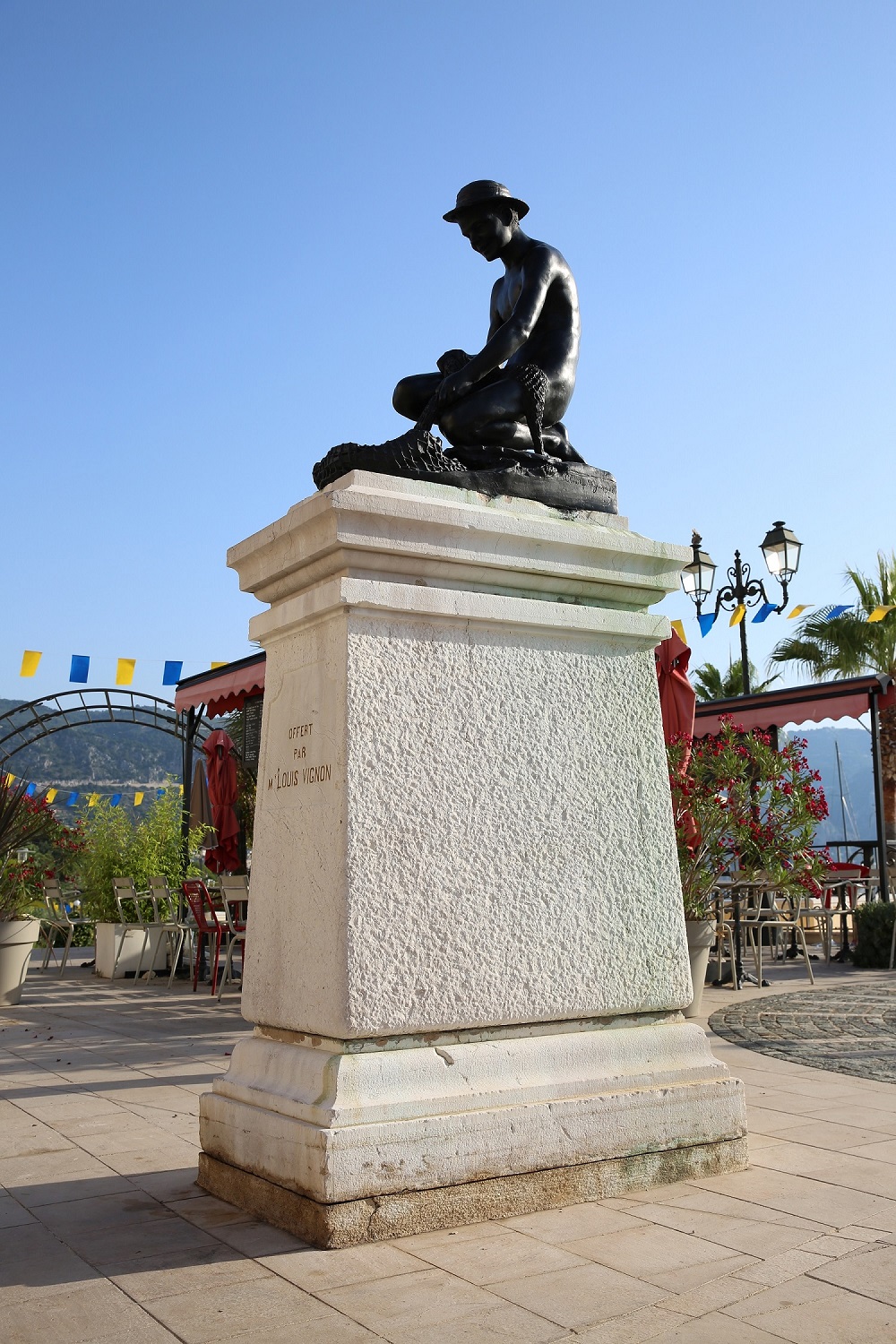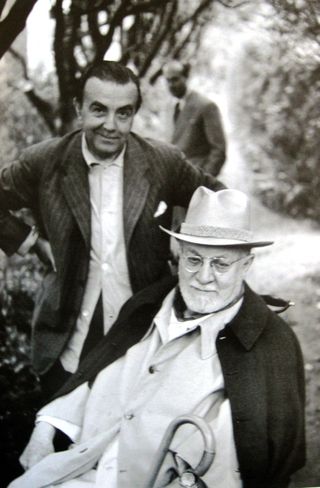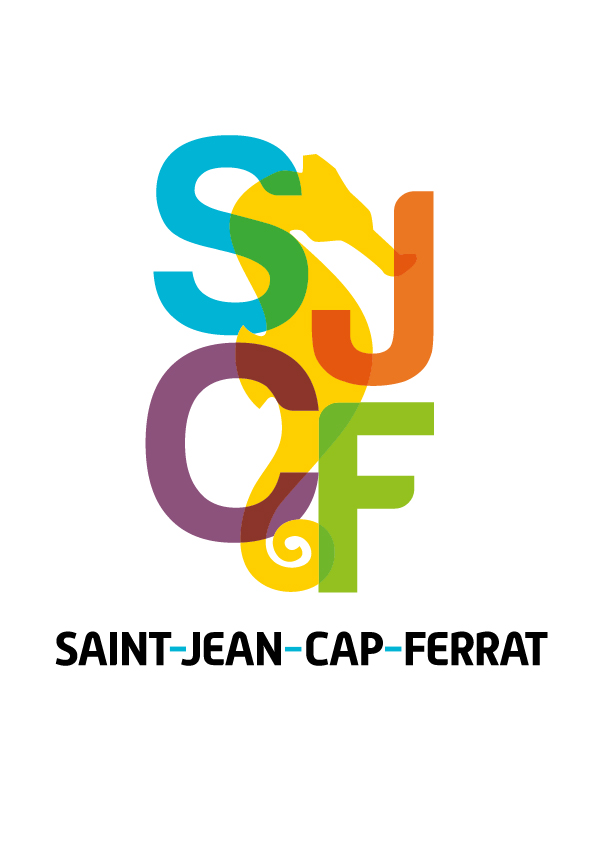History
At the beginning of the 20th century, winter tourism started to grow on the French Riviera. The region’s mild climate attracted rich foreign families who made it a famous destination over the years.

Statue "Le pêcheur à l'épervier"
History
Saint-Jean-Cap-Ferrat, an outstanding destination
The peninsula of Saint-Jean-Cap-Ferrat became a leading holiday resort around the end of the 19th century. Its dry and rocky landscape was originally home to just a handful of fishermen's and farmers' cottages clustered around the church and harbour. This hamlet was known as Saint-Jean and was part of the municipality of Villefranche-sur-Mer.Around the same time, the Compagnie Générale des Eaux created a 20,000m³ artificial lake, fed by the river Vésubie, enhanced by a small island and a waterfall, set in the middle of leafy grounds. This water was the reason why the peninsula came to be covered in denser and more diverse vegetation. From then on, Cap-Ferrat became the favourite place for the families who would arrive from Nice by horse-drawn carriage to have picnics under the pine and olive trees, or have lunch in one of the many restaurants that sprang up near the harbour.
Independence
The County of Nice, which had belonged to the House of Savoy since 1388, was annexed to France in 1860. In 1904, Saint-Jean separated from Villefranche-sur-Mer and became an independent municipality. Originally named Saint-Jean-sur-Mer, the peninsula took the name of Saint-Jean-Cap-Ferrat in 1907.Developing tourism
In the early 1900s, winter tourism began to be popular on the French Riviera. Its very mild climate made it attractive to rich British or Russian families who soon made it a highly acclaimed destination. Saint-Jean-Cap-Ferrat became very popular following the visits of King Leopold II and various members of the Belgian aristocracy. The first great estates were built. In 1904, the hôtel Panorama Palace (now the hôtel Royal-Riviera) was built at the entrance of the peninsula. Its geographical location placed it at the center of high society. Designed to welcome a wealthy cosmopolitan clientèle, 1908 saw the construction of the Grand-Hôtel at the Cap-Ferrat headland.In the Fifties, tourism started to become more summer-based and Saint-Jean-Cap-Ferrat became a fashionable sea-side resort popular with celebrities from all over the world. Visitors included Edith Piaf, Charlie Chaplin, Somerset Maugham, Gregory Peck, Elizabeth Taylor and Richard Burton, Jean Paul Belmondo, Roger Moore, Tony Curtis, David Niven and Romy Schneider, who got married there in 1966. It was also a haven for politicians such as Général de Gaulle, Valéry Giscard d’Estaing, Raymond Barre, Winston Churchill, George Bush, Bill Clinton and Boris Yeltsin.
Famous painters also stayed in Saint-Jean-Cap-Ferrat.
Henri Matisse paid many visits to Villa Natacha, owned by the art publisher Alec Tériade. The painter had already created a stained glass window and a ceramic mural for the villa's dining room. The publisher welcomed numerous artists there with whom he collaborated, including Chagall and Picasso, and even his fellow countryman Odysséas Elýtis, who won the Nobel Prize for Litterature in 1979.Charlotte Salomon, a Jewish artist of German origin, stayed at the Belle Aurore hotel (now called La Villa Cap Ferrat Hotel & Spa) for two years, where she painted her masterpiece "Life? or Theatre?"*.
But the artist who had the biggest impact on Saint-Jean-Cap-Ferrat was Jean Cocteau. A regular guest at the 'Santo Sospir' villa whose walls were decorated by him with splendid frescoes, he was also behind the fresco that graces the wedding hall in the Town Hall.
Ever since, royalty, artists, politicians and rich industrialists have continued to fall in love with the unique charm of this place where the expression "In order to live happily, live hidden" acquires its meaning.
* The writer David Foenkinos dedicated his book "Charlotte" (winner of the Prix Renaudot and Prix Goncourt des Lycéens 2014) to this talented artist who died in Auschwitz in 1943 at the age of just 26, and whose work is exhibited at the Jewish Museum in Amsterdam.

Alec Tériade and Henri Matisse in the garden of the villa Natacha
Useful
informations
Find all the useful informationon Saint-Jean-Cap-Ferrat





